On-Page SEO Guide In 2024
If you are a beginner or an experienced SEO specialist, you will find actionable tips, real-world case studies, and a roadmap to raise your on-page SEO game. With confidence, enter the world of digital marketing with these helpful tips. Take control of your SEO strategy today and start gaining a competitive edge. You can boost visibility and generate increased organic traffic with the right tools and guidance. Get ready to see your SEO game soar! But first let’s define what On-Page SEO is.
What is On-Page SEO?
On-page SEO refers to improving the optimization of both the “content and the design” of a website as part of a broader SEO plan.
To optimize a website for search engines, various on-page elements must be considered
- content
- meta tags
- headings
- multimedia
NOTE: For the site to provide a seamless and relevant experience, the algorithms used to determine the search engine rankings must be aligned with the user experience.
Now lets differentiate On-Page SEO vs Off-Page SEO
On-Page SEO vs Off-Page SEO
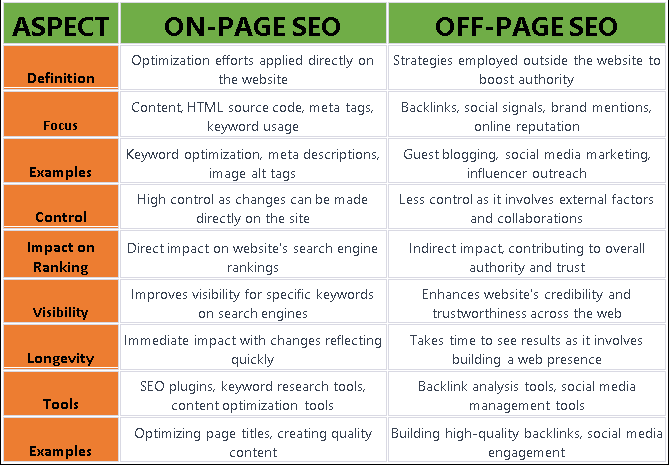
Why Is On-Page SEO Important?
The equation ‘Apple is equal to apple’ signifies that search results should precisely match the user’s intent. 
When users input specific terms like ‘buy an apple,’ Google comprehends the distinct search intent and ensures the displayed results align with that intention.
The significance of On-Page SEO lies in addressing users’ search queries effectively, emphasizing the creation of valuable content tailored to meet their needs.”
How to do On-Page SEO?
You can create valuable and rich content with a clear understanding of your target keywords.
Using this knowledge, you can create a compelling title for your H1 tag and develop subtopics that seamlessly integrate your chosen keywords.
You can enrich the overall relevance of your content by strategically incorporating these keywords into the main title and subtopics, making it more likely to resonate with your intended audience and perform well in search engine results.
First step: Do keyword research
I’m gonna use keywordtool.io for this example
put you Primary target keyword to search bar in this example is “On-Page SEO”

below you get Related keyword And the best keyword to target are those who has “high Search Volume”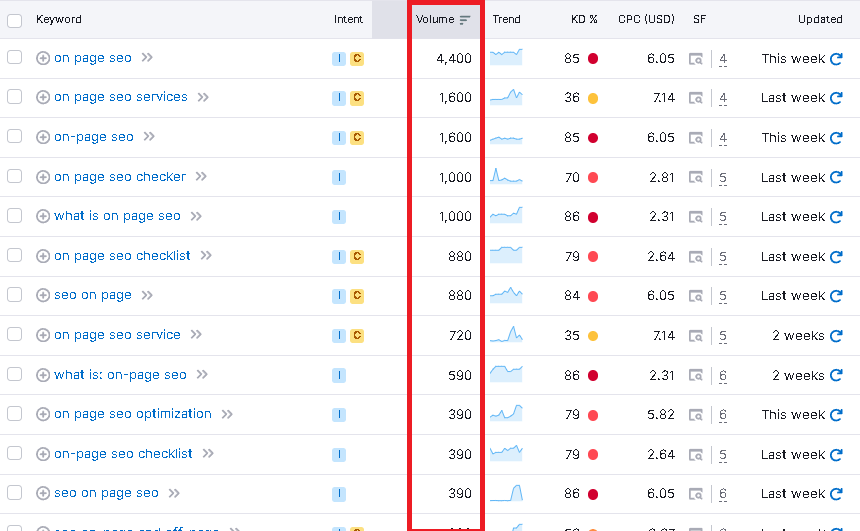
As a suggestion, avoid targeting keywords with a high level of keyword difficulty. This indicates high competitiveness, making it harder to achieve a favorable ranking for that keyword.
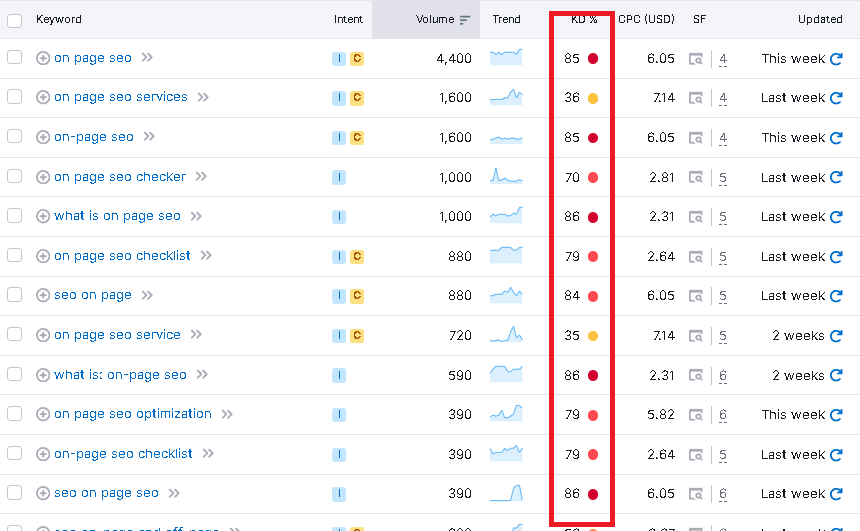
Unless you plan to invest significantly in future link building and content creation efforts, it’s advisable to focus on “long tail keywords” with lower difficulty levels to enhance your chances of ranking successfully
now your ready to make a content, but how you strategically write a content
Second step: Writing a content
The art of crafting content is similar to that of storytelling, which begins with a title, progresses through paragraphs, and culminates with subtitles.
The following areas are crucial for optimizing your content for search engines and enhancing its visibility:.
H1 (Main Title):
The primary title, often referred to as H1, acts as the narrative’s headline. By including your target keywords in the H1 tag, you signal to search engines the primary focus of your content.
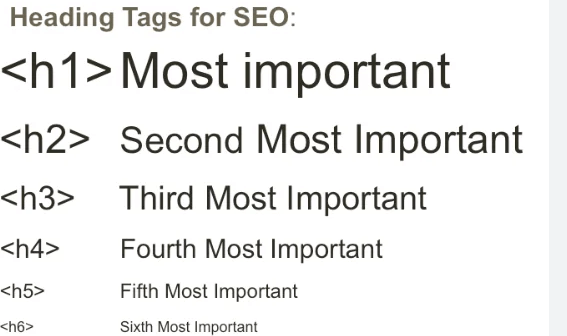
First Paragraph:
The opening paragraph sets the tone for your entire piece. Embedding your target keywords naturally within this section not only provides clarity to both readers and search engines but also establishes relevance from the outset.
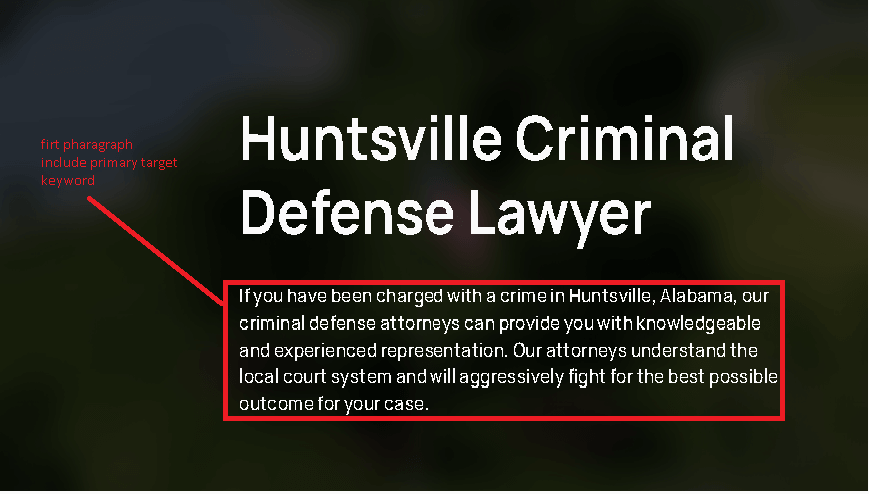
Third step: writing a Tittle tag
It is the first title that searchers can see on the results page, and it also influences users to click on the page when they see the keyword they are searching for in the title tags.

Tips on writing a tittle tag:
make it unique: each page should contain different tittle tags
- keep it short: around 50 to 60 words
- include your keyword: Tittle tag should contain your primary keyword
Fourth Step: Catchy Meta tags
- It is a short description of your page, it tells user what could the expect when clicking that page

Should your meta description not align with the user’s search intent or the content on the page, Google might opt to select its own description for the Search Engine Results Page (SERP)
Tips on writing a meta tags:
- Add call to action: It is inviting users to click your page
- Include target keyword: Again users can easily keep an eye their search keyword on meta tag.
- Keep it short: Make it about 120 letters
Fifth step: Friendly Url
Employ terms pertinent to your content to provide users with a clear understanding of your page’s subject matter.

Avoid incorporating random numbers, publication dates, or complete sentences in your URL, as website themes may automatically include these elements.
It is crucial to update your URL before publishing to ensure it aligns with your content. Including your target keyword in the URL is an effective strategy to ensure that your web address accurately reflects the topic of your content